JUST why is South Africa contributing $10bn to the $50bn balance sheet of a proposed new Brics development bank?
It is a hefty chunk of change, equivalent to one-third of the capital in South Africa’s entire commercial banking system.
It is slightly more than the capital of our biggest domestic development financier, the Industrial Development Corporation, and more than the African Development Bank’s (ADB’s) paid up capital of $7.4bn.
There is no doubt that development takes finance. Finance Minister Nhlanhla Nene has said Africa’s current infrastructure needs will take $100bn to fund. With $50bn of capital, plus leverage raised on international capital markets, the Brics bank will be able to fund that and more.
The trouble is the New Development Bank, as it will be branded, will have to spend some of its capital on getting itself off the ground. These infrastructure costs will, to some extent, be duplicated. One alternative is the ADB, and it already has all that infrastructure in place. But another way could make the cost to South Africa minimal, and it involves using our own Development Bank of Southern Africa (DBSA). The Brics bank will have to deliver additional value for it to be worth the extra cost.
That value may be political.
It is clear from the Fortaleza declaration of the Brics summit that announced the bank’s establishment, that the Brics members are trying to dilute the power of the World Bank and International Monetary Fund (IMF) in the world economy. The Brics bank will overlap the World Bank, but with capital of $223bn, the 70-year-old Bretton Woods institution will remain the big daddy.
Diluting the power of the IMF and World Bank could well be worth it. World Bank policies of the past had destructive consequences for countries’ taking facilities. An alternative source of funding will give future governments more flexibility on the conditions they must submit to.
Beyond the political value, South Africa does not appear to be getting much else. The headquarters will be in Shanghai and the starting three principle executives of the bank will be Indian, Russian and Brazilian. Africa is, apparently, going to be a priority for the new bank and a regional African office is going to be opened in South Africa.
The Brics bank needs to avoid duplicating infrastructure as much as possible. The way to do that is to tie the Africa office closely to the DBSA. Last year the Treasury decided to inject another R7.4bn into the DBSA as capital to support its expansion into a major pan-African development funder, alongside its local commitments.
So, there is an obvious step to take: reconstitute the DBSA as the African branch of the Brics bank to ensure minimal duplication. Doing so will also meet much of South Africa’s funding commitment to the new bank, though some cash is also going to have to go into a parent balance sheet.
Mr Nene has said the capital South Africa is contributing will amount only to about $2bn in cash and be staged over a number of years. Presumably the other $8bn will be in the form of guarantees on other equity commitments.
The savvy civil servants at the Treasury have probably already figured this out. What we will contribute is the DBSA — or at least its regional activities — which will be able to get on with what it is set to do anyway. The Brics bank will have much better credit ratings than the DBSA could get.
So, the real effect of the Brics bank could be to take the DBSA and turn it into a much weightier player with a globally potent credit rating, allowing it to raise cheap finance. The cost of such a strategy is that South Africa would have to give up political control of one of its own important African development initiatives.
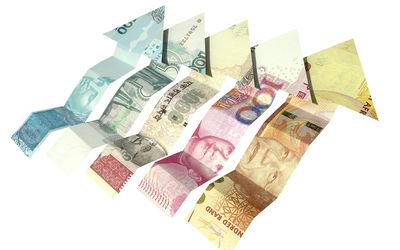
Picture: THINKSTOCK
JUST why is South Africa contributing $10bn to the $50bn balance sheet of a proposed new Brics development bank?
It is a hefty chunk of change, equivalent to one-third of the capital in South Africa’s entire commercial banking system.
It is slightly more than the capital of our biggest domestic development financier, the Industrial Development Corporation, and more than the African Development Bank’s (ADB’s) paid up capital of $7.4bn.
There is no doubt that development takes finance. Finance Minister Nhlanhla Nene has said Africa’s current infrastructure needs will take $100bn to fund. With $50bn of capital, plus leverage raised on international capital markets, the Brics bank will be able to fund that and more.
The trouble is the New Development Bank, as it will be branded, will have to spend some of its capital on getting itself off the ground. These infrastructure costs will, to some extent, be duplicated. One alternative is the ADB, and it already has all that infrastructure in place. But another way could make the cost to South Africa minimal, and it involves using our own Development Bank of Southern Africa (DBSA). The Brics bank will have to deliver additional value for it to be worth the extra cost.
That value may be political.
It is clear from the Fortaleza declaration of the Brics summit that announced the bank’s establishment, that the Brics members are trying to dilute the power of the World Bank and International Monetary Fund (IMF) in the world economy. The Brics bank will overlap the World Bank, but with capital of $223bn, the 70-year-old Bretton Woods institution will remain the big daddy.
Diluting the power of the IMF and World Bank could well be worth it. World Bank policies of the past had destructive consequences for countries’ taking facilities. An alternative source of funding will give future governments more flexibility on the conditions they must submit to.
Beyond the political value, South Africa does not appear to be getting much else. The headquarters will be in Shanghai and the starting three principle executives of the bank will be Indian, Russian and Brazilian. Africa is, apparently, going to be a priority for the new bank and a regional African office is going to be opened in South Africa.
The Brics bank needs to avoid duplicating infrastructure as much as possible. The way to do that is to tie the Africa office closely to the DBSA. Last year the Treasury decided to inject another R7.4bn into the DBSA as capital to support its expansion into a major pan-African development funder, alongside its local commitments.
So, there is an obvious step to take: reconstitute the DBSA as the African branch of the Brics bank to ensure minimal duplication. Doing so will also meet much of South Africa’s funding commitment to the new bank, though some cash is also going to have to go into a parent balance sheet.
Mr Nene has said the capital South Africa is contributing will amount only to about $2bn in cash and be staged over a number of years. Presumably the other $8bn will be in the form of guarantees on other equity commitments.
The savvy civil servants at the Treasury have probably already figured this out. What we will contribute is the DBSA — or at least its regional activities — which will be able to get on with what it is set to do anyway. The Brics bank will have much better credit ratings than the DBSA could get.
So, the real effect of the Brics bank could be to take the DBSA and turn it into a much weightier player with a globally potent credit rating, allowing it to raise cheap finance. The cost of such a strategy is that South Africa would have to give up political control of one of its own important African development initiatives.


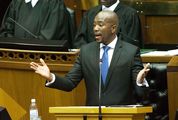
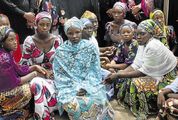
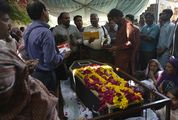



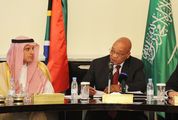












Change: -0.47%
Change: -0.57%
Change: -1.76%
Change: -0.34%
Change: 0.02%
Data supplied by Profile Data
Change: -1.49%
Change: -0.04%
Change: -0.47%
Change: 0.00%
Change: 0.08%
Data supplied by Profile Data
Change: 0.36%
Change: 0.84%
Change: 0.22%
Change: -0.22%
Change: 0.82%
Data supplied by Profile Data
Change: 0.29%
Change: -0.53%
Change: 0.26%
Change: -1.40%
Change: -0.96%
Data supplied by Profile Data